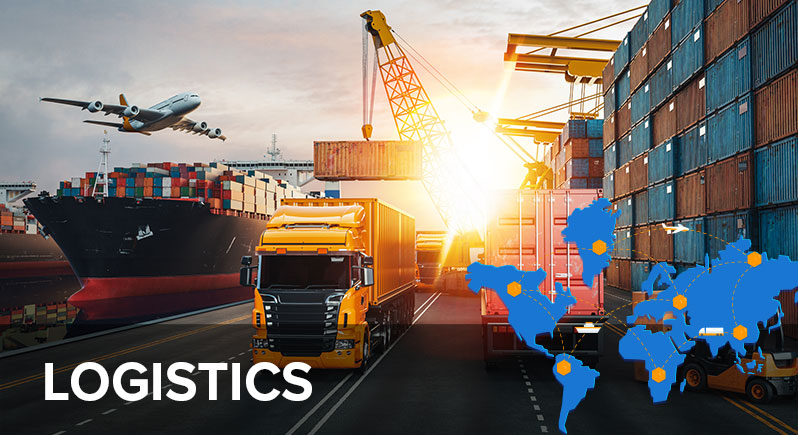
request Free trial
Request a free trial
Experience how Vector connects your fleet, from the road to the back office.


Reverse logistics is an important part of the global supply chain that businesses didn't think much about in the old days. It refers to the way companies reuse products and materials from finished goods. This can include product returns, repairs, refurbishment, recycling, and many other reasons to occasionally put that supply chain in reverse.
If you're a fleet manager, carrier, shipper, or driver, your main focus is on getting products to their destination. However, it makes sense to find out why those products sometimes go back to their point of origin. Reverse logistics helps companies save money, improve customer satisfaction, help the planet, and improve their public profiles.
The e-commerce industry uses the term reverse logistics fairly frequently because in that business the return of products and materials is common. But there's much more to the concept than many people realize. Reverse logistics is a competitive tool that can help an organization differentiate and be reliable and competitive.
As businesses expand their reverse logistics operations, the demand for truckers and logistic firms that can handle it will increase. Thus, truckers and logistic organizations should have a strong understanding of what reverse logistics is and how to use its advantages. This post dives deeper into these topics.
If you aren't feeling quite up to speed on this topic, let's cover the basics first.
Reverse logistics means moving goods and products from their destination (the end user) back to the seller or manufacturer. Thus, reverse logistics is like the traditional supply chain, but it moves in the opposite direction. The ultimate objective for the process is proper disposal, customer satisfaction, servicing, or recapturing value.
Typically, products or goods travel from their point of sale to their point of origin or production. These returned goods then go through recycling, servicing, or refurbishing at the manufacturer or distributor. Thus, reverse logistics helps an organization create extra customer value from already sold products without costing an extra penny to its customers.
Most movement of goods during after-sale services of a product involves reverse logistics. The practice of returning items or disposing of them for reuse and recycling isn't a new concept. However, today many businesses are researching and analyzing the field in much more detail. Thanks to rising sustainability concerns and growing adoption of e-commerce all over the world, many businesses are realizing its massive potential. According to TechHQ, the global reverse logistics market is forecast to hit $604 billion by 2025.
Now, let's discuss how companies and organizations use reverse logistics.
Here are some of the areas where reverse logistics can help companies recapture value.
Many manufacturers have become more interested in reverse logistics. Here's why.
It's possible to break down the major benefits of reverse logistics into three categories.
By monitoring the reasons behind the return of goods and products, a manufacturer can analyze the problems with its products. Consequently, the manufacturer can make changes and improvements. This increases customer loyalty and customer satisfaction. Businesses use big data to help them collect and analyze many thousands of such data points to make business decisions.
An efficient reverse logistics process also helps companies save on the overhead costs of free returns policies. Moreover, companies can also enter the refurbished market to increase the lifetime economic value of the product. As more brands improve their reverse logistics, trucking and logistics companies that can comply with these processes will be in high demand. That's why digitized documents are so vital to the logistics industry.
Manufacturers usually inspect, recover, and test all products that come back to them through reverse logistics. They then repair, recycle, or reuse these returned products, or they dispose of them if necessary. As companies gather more data through this process, they get better at segregating the items. They improve at using these avenues, and the operation becomes more efficient and seamless. This enables companies to extract the maximum value from every option available to them once the products come back. Major brands are also investing heavily in inventory management to digitize the whole process.
Reverse logistics is a globally responsible process that helps the environment. It decreases toxic waste and reduces the pollution caused during the manufacturing of new products. Sustainability-conscious companies that struggle to get their supply chain "green" enough can rely on reverse logistics because all its aspects have green implications. Apart from reusing and recycling, refurbishing products to sell in a secondary market is also environmentally friendly while increasing revenues for the company.
Of late, there's been a misconception that the process of reverse logistics is expensive and isn't a profitable investment. However, by optimizing the process thoroughly, manufacturers and companies can capture additional value throughout the product life cycle.
What can companies do to make reverse logistics a worthwhile investment?
Although implementing and planning for reverse logistics requires capital investment, businesses shouldn't overlook the long-term benefits. A research study confirms that companies spend more than $100 billion annually on reverse logistics. The chances of a customer buying a product with a return policy are much higher than if no return policy is available.
Managing reverse logistics operations can help businesses increase profitability and be more environmentally friendly. As the demand for e-commerce increases globally and consumers become more interested in sustainability, the demand for reverse logistics is going to grow. Truckers and logistic firms that are ready for this change are likely to do well in the next few years.
This post was written by Aditya Khanduri. Aditya currently handles product and growth at Cryptio.co, and he's also built a couple of B2B products. He's proficient in data analysis with Python and has worked with multiple startups in the blockchain and artificial intelligence sector.